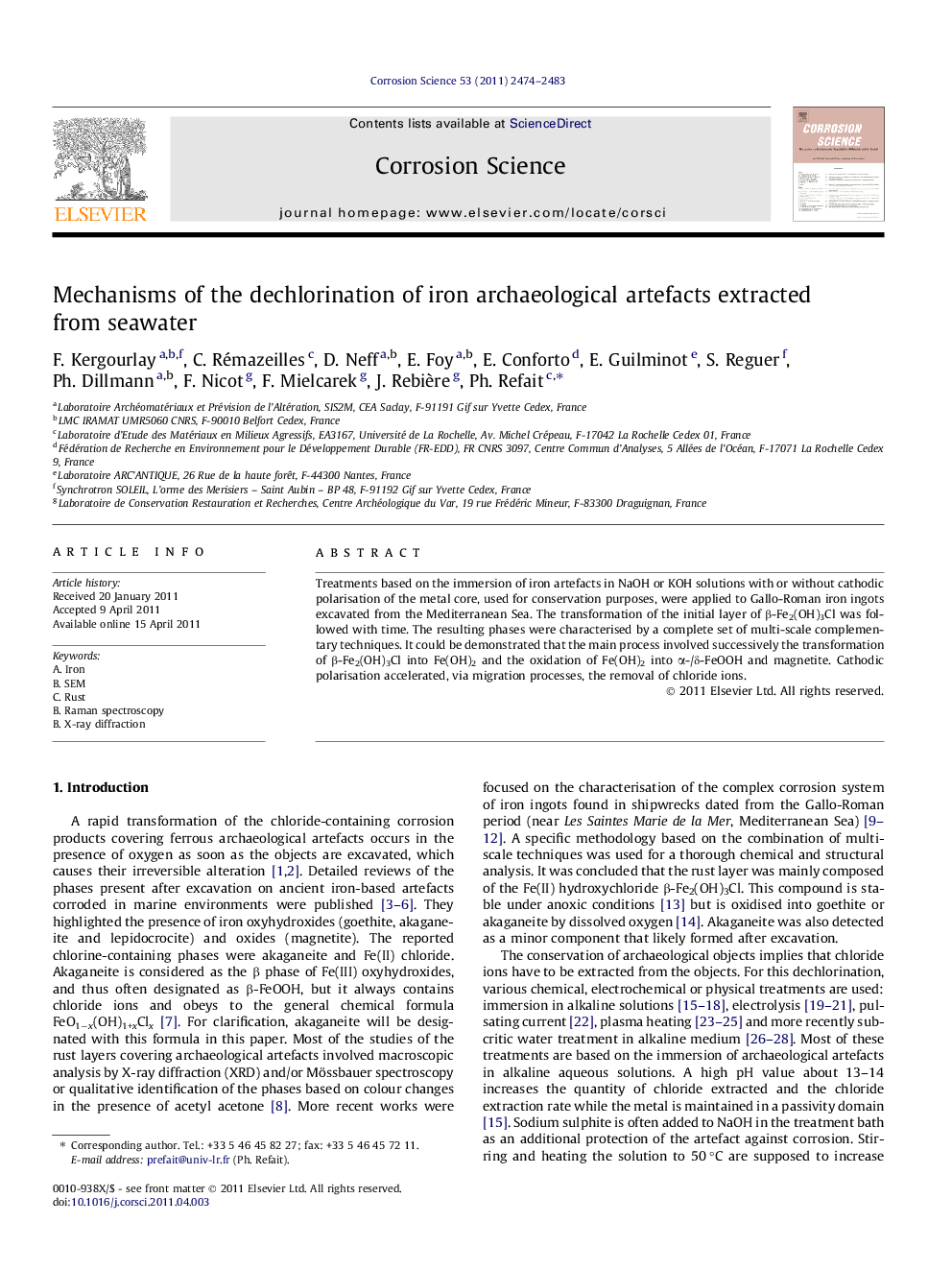| Article ID | Journal | Published Year | Pages | File Type |
|---|---|---|---|---|
| 1470012 | Corrosion Science | 2011 | 10 Pages |
Treatments based on the immersion of iron artefacts in NaOH or KOH solutions with or without cathodic polarisation of the metal core, used for conservation purposes, were applied to Gallo-Roman iron ingots excavated from the Mediterranean Sea. The transformation of the initial layer of β-Fe2(OH)3Cl was followed with time. The resulting phases were characterised by a complete set of multi-scale complementary techniques. It could be demonstrated that the main process involved successively the transformation of β-Fe2(OH)3Cl into Fe(OH)2 and the oxidation of Fe(OH)2 into α-/δ-FeOOH and magnetite. Cathodic polarisation accelerated, via migration processes, the removal of chloride ions.
► Rust layers of archaeological artefacts were thoroughly characterised by a set of multi-scale complementary techniques. ► Evolution of rust layers of archaeological artefacts during dechlorination process was compared to that of laboratory models. ► The mechanism of the transformations occurring inside the rust layer during dechlorination were described and interpreted. ► Dechlorination treatments could be optimised in the light of the new understanding of the mechanisms.
